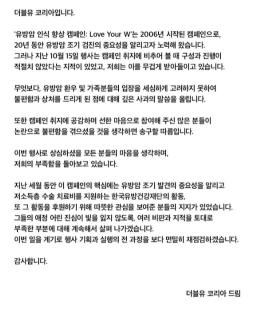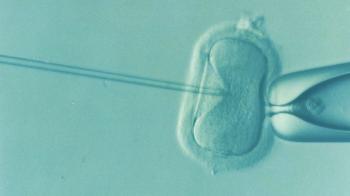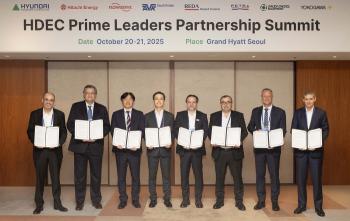Incheon Himchan General Hospital introduces the first treatment of minimally invasive ITind for prostate hypertrophy in Incheon...Within 10 minutes of the procedure
May 07, 2025
The department of urology at Himchan General Hospital in Incheon introduced nitinol stent insertion, also known as 'itind' procedure, for the first time in Incheon to treat prostate hypertrophy and began full-scale implementation. It is the second procedure in Korea that requires the acquisition of clinical certification, and was acquired by Lee Jang-hee, head of the urology department. The official name of the Itind procedure is 'temporary nitinol stent insertion in prostate hypertrophy' and was certified as a new medical technology by the Ministry of Health and Welfare in May 2024.
In prostate hypertrophy, temporary nitinol stent insertion (hereinafter 'aitind procedure') is performed by inserting a nitinol (alloy of titanium and nickel) stent from the bladder neck to the narrowed area of the prostate urethra using a bladder mirror and removing it five days later. It is expected to be a treatment option to reduce the burden of treatment on patients in recognition of its safety and effectiveness in improving symptoms of urination disorders caused by obstruction of the lower urinary tract.
Lee Jang-hee, head of the urology department at Himchan General Hospital in Incheon, said, `The ITIND procedure is possible without general anesthesia, the procedure time is short within 10 minutes, and the burden on patients is low because they can be discharged on the same day.' `Since it is not a surgery through incision, it is a great advantage that it improves treatment results in a simple way while minimizing the risk of side effects such as bleeding, infection, incontinence, and ejaculation disorders.'
◇ More than half of those in their 50s suffer from prostatic hyperplasia...I'm afraid of surgery, so I'm hesitant about treatment
Prostate hypertrophy is a disease that causes urination disorders as the prostate that is only present in men is larger than normal due to various causes, and the incidence rate is high enough to be experienced by more than 50% of middle-aged people in their 50s or older. According to the Health Insurance Review and Assessment Service's disease data of public interest, the number of prostate proliferation (prostate hypertrophy) patients in 2023 was 1,532,151, of which 1,493,6572 patients were in their 50s or older.
When the prostate is enlarged, it compresses the urethra through which urine passes, making smooth urination difficult, and the rate of discharge is also slowed. It causes discomfort in daily life, such as feeling residual urine even after urination, or feeling sudden urination and not coming out well even when going to the bathroom. In general, surgical surgery is considered when treating prostate hypertrophy, and patients often hesitate to treat it due to fear and burden of surgery.
If prostate hypertrophy is left unattended for a long time, it has a great impact on the quality of life. In some cases, it improves naturally, but in most cases, the size of the prostate increases over time, worsening symptoms. In particular, if urinary symptoms that fail to excrete urine are left unattended for a long time, the contractility of the bladder may become irreparable, and normal urination may become difficult even if the enlarged prostate is operated. Therefore, appropriate medication or surgical treatment is required according to symptoms.
◇Minimum Invasive 'Itind' Procedure Expects Treatment Satisfaction
The Haitian procedure introduced to the treatment of prostate hypertrophy is a minimally invasive method, and it is a principle that physically expands the narrowed urethral space as the device gradually unfolds by inserting a device made of nitinol, a shape memory alloy, without resection of prostate tissue. When inserted into the body and removed for about 5 days, the expanded urethral space is maintained for a certain period of time, improving urination disorders.
Unlike conventional prostatectomy, there is no need to keep a catheter for a long time, and the treatment device is not left in the body compared to conventional non-invasive surgery, so it reduces foreign body sensation, pain, and bleeding, increasing satisfaction.
In fact, according to a 48-month follow-up study of patients who underwent treatment in 2023, symptoms steadily improved and no complications occurred during this period. A total of 81 subjects were examined, including prostate symptom score, quality of life satisfaction, highest urine velocity, and residual urine volume after urination. As a result, it was confirmed that the effect continued even though it was a simple procedure, as the reoperation rate remained stable for 48 months without side effects, and the reoperation rate was 4% after 36 months and 11.1% after 79 months.
According to the evaluation results of the New Medical Technology Evaluation Committee, most adverse reactions after the procedure were temporary or mild in terms of safety, and changes in sexual function also showed no difference or improvement before and after the procedure. In addition, the degree of improvement of symptoms and the effectiveness through quality of life evaluation were also recognized to be significantly improved after the procedure compared to before the procedure.
This procedure can be used to improve symptoms of urination disorders due to lower urinary obstruction for prostate hyperplasia patients over 50 years of age, with a prostate volume of 25-75cc, an international prostate symptom score of 10 points or more, and a maximum flow rate of 12ml/s or less.
Lee Jang-hee, head of the urology department at Himchan General Hospital in Incheon, said "The ITIND procedure is necessary to make an accurate diagnosis because it determines suitability by comprehensively considering the size of the prostate, urethral structure, and bladder functional condition."It is safe for patients who have been burdened with surgery for various reasons, and we will allow more patients with urination disorders to be relieved of their discomfort through new treatment."
In prostate hypertrophy, temporary nitinol stent insertion (hereinafter 'aitind procedure') is performed by inserting a nitinol (alloy of titanium and nickel) stent from the bladder neck to the narrowed area of the prostate urethra using a bladder mirror and removing it five days later. It is expected to be a treatment option to reduce the burden of treatment on patients in recognition of its safety and effectiveness in improving symptoms of urination disorders caused by obstruction of the lower urinary tract.
Lee Jang-hee, head of the urology department at Himchan General Hospital in Incheon, said, `The ITIND procedure is possible without general anesthesia, the procedure time is short within 10 minutes, and the burden on patients is low because they can be discharged on the same day.' `Since it is not a surgery through incision, it is a great advantage that it improves treatment results in a simple way while minimizing the risk of side effects such as bleeding, infection, incontinence, and ejaculation disorders.'
◇ More than half of those in their 50s suffer from prostatic hyperplasia...I'm afraid of surgery, so I'm hesitant about treatment
Prostate hypertrophy is a disease that causes urination disorders as the prostate that is only present in men is larger than normal due to various causes, and the incidence rate is high enough to be experienced by more than 50% of middle-aged people in their 50s or older. According to the Health Insurance Review and Assessment Service's disease data of public interest, the number of prostate proliferation (prostate hypertrophy) patients in 2023 was 1,532,151, of which 1,493,6572 patients were in their 50s or older.
When the prostate is enlarged, it compresses the urethra through which urine passes, making smooth urination difficult, and the rate of discharge is also slowed. It causes discomfort in daily life, such as feeling residual urine even after urination, or feeling sudden urination and not coming out well even when going to the bathroom. In general, surgical surgery is considered when treating prostate hypertrophy, and patients often hesitate to treat it due to fear and burden of surgery.
If prostate hypertrophy is left unattended for a long time, it has a great impact on the quality of life. In some cases, it improves naturally, but in most cases, the size of the prostate increases over time, worsening symptoms. In particular, if urinary symptoms that fail to excrete urine are left unattended for a long time, the contractility of the bladder may become irreparable, and normal urination may become difficult even if the enlarged prostate is operated. Therefore, appropriate medication or surgical treatment is required according to symptoms.
◇Minimum Invasive 'Itind' Procedure Expects Treatment Satisfaction
The Haitian procedure introduced to the treatment of prostate hypertrophy is a minimally invasive method, and it is a principle that physically expands the narrowed urethral space as the device gradually unfolds by inserting a device made of nitinol, a shape memory alloy, without resection of prostate tissue. When inserted into the body and removed for about 5 days, the expanded urethral space is maintained for a certain period of time, improving urination disorders.
Unlike conventional prostatectomy, there is no need to keep a catheter for a long time, and the treatment device is not left in the body compared to conventional non-invasive surgery, so it reduces foreign body sensation, pain, and bleeding, increasing satisfaction.
In fact, according to a 48-month follow-up study of patients who underwent treatment in 2023, symptoms steadily improved and no complications occurred during this period. A total of 81 subjects were examined, including prostate symptom score, quality of life satisfaction, highest urine velocity, and residual urine volume after urination. As a result, it was confirmed that the effect continued even though it was a simple procedure, as the reoperation rate remained stable for 48 months without side effects, and the reoperation rate was 4% after 36 months and 11.1% after 79 months.
According to the evaluation results of the New Medical Technology Evaluation Committee, most adverse reactions after the procedure were temporary or mild in terms of safety, and changes in sexual function also showed no difference or improvement before and after the procedure. In addition, the degree of improvement of symptoms and the effectiveness through quality of life evaluation were also recognized to be significantly improved after the procedure compared to before the procedure.
This procedure can be used to improve symptoms of urination disorders due to lower urinary obstruction for prostate hyperplasia patients over 50 years of age, with a prostate volume of 25-75cc, an international prostate symptom score of 10 points or more, and a maximum flow rate of 12ml/s or less.
Lee Jang-hee, head of the urology department at Himchan General Hospital in Incheon, said "The ITIND procedure is necessary to make an accurate diagnosis because it determines suitability by comprehensively considering the size of the prostate, urethral structure, and bladder functional condition."It is safe for patients who have been burdened with surgery for various reasons, and we will allow more patients with urination disorders to be relieved of their discomfort through new treatment."
|
This article was translated by Naver AI translator.














